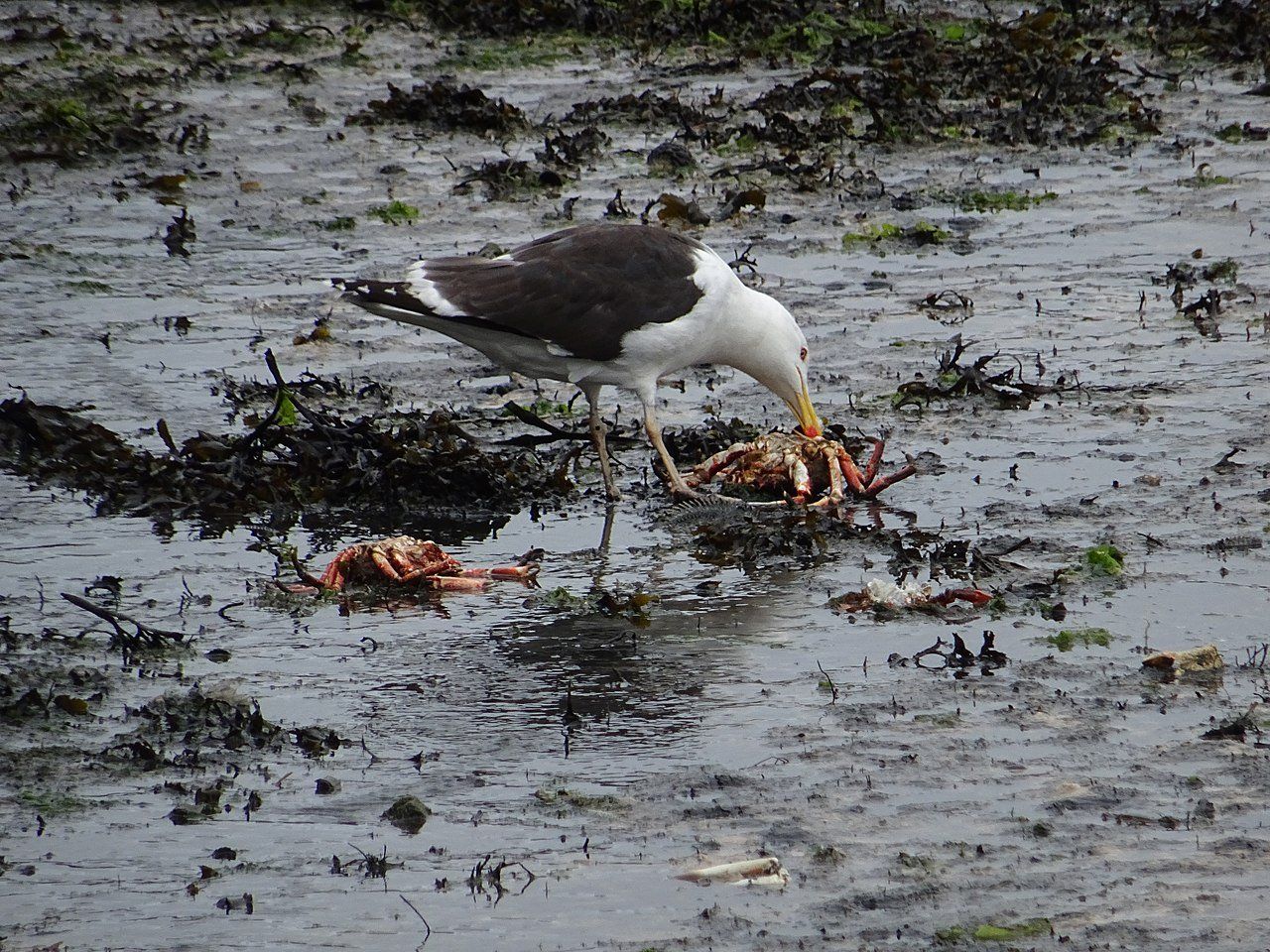Dead Crustaceans
in the Tees:
Has DEFRA Delivered
The Whitehall
Whitewash?

photo by NeoMeesje, Wikimedia Commons
Scott Hunter
17 February 2022
DEFRA has concluded that the deaths of large numbers of crustaceans in the Tees in late September/ early October 2021 was a naturally occurring event. Many people remain sceptical, however. Scientific evidence remains inconclusive, and many non-scientific questions remain unanswered. DEFRA has turned a drama into a crisis of confidence, and a few more things besides.
There are certain aspects of the circumstances of this incident about which the DEFRA report is curiously silent. It’s time to give them an airing, and to question why the organisations involved in the investigation may be shy about getting into discussion.
Prior to receiving the final update of DEFRA’s report, we sent a series of questions on the issue to the Environment Agency. A number of the issues we raised turned out to be unanswered by this report and we are yet to hear back from Environment Agency.
The DEFRA report provides welcome detail on certain issues that have been raised, particularly in relation to dredging as a possible cause of the deaths. DEFRA’s conclusion is that pollution caused by dredging is not the cause as that industry is very well regulated. Having tested for toxins, it concludes that this was not, in fact, a pollution incident at all and an algal bloom, a naturally occurring event, is the most probable cause of the deaths. That bloom was dispersed, we are told, by a storm on 6 October. Job done? Not quite.
There are a number of loose ends, and consideration of these raises questions about just how thorough the investigation was. In addition to this, anyone reading the report in the hope of finding out why their dog got sick after visiting one of the local beaches will be disappointed. Anyone wondering if the beaches are now once again safe places to take their children, will similarly be left in limbo.
The search for toxins
We should state at the outset that large-scale crustacean deaths are uncommon in British waters. A quick Google search reveals a similar event off the Kent coast in 2011, but nothing (at least not on this scale) since then. It’s also significant to note that the Tees has been, and probably remains, the most polluted watercourse in the UK. So, an initial assumption that this was a pollution-related incident is not unreasonable.
The Whitby Commercial Fishing Association commissioned a report by Tim Deere-Jones, who re-examined the evidence on toxins gathered by the various agencies involved in researching the incident and reported that high levels of the solvent pyridine were found in the tissue of dead crabs. He concludes that the most likely source was historic deposits released into the water from sediment disturbed by dredging.
As against this, we should point out that pyridine is used extensively in the chemicals and pharmaceuticals industries, and thus in a large number of plants in this region. If there is pyridine in the sediment, it is probably in all of the sediment, and you have to question why incidents such as this one haven’t occurred every time a section of the river or estuary is dredged. Moreover, the DEFRA report claims that Environment Agency permits for industrial plants were extensively examined during the investigation.
The investigation at this point appears quite robust, but there is a question. If there is a possibility that this was the result of spillage of toxic material into the estuary, what is the most likely source?
Why is Vertellus Specialities Ltd of particular interest?
One of the questions as yet unanswered by the Environment Agency is that of whether particular attention was paid to the chemical plant, Vertellus Specialities, at Seal Sands, on the North bank of the river. It was announced in November that this plant was to close, but what makes it of special interest is that it uses pyridine extensively, the chemical that Deere-Jones reports to have been found in high concentrations in the dead crustaceans.
In addition to this, as the table below indicates, the plant had a turbulent relationship with the Health and Safety Executive:

The entries here all relate to Vertellus’ failure to apply adequate standards to ‘control of major accident hazards’ (COMAH) and appear to be based on an inspection carried out during 2020. And furthermore, in mid-2020, the company changed the way it managed some of its effluent. Instead of treating all of it in-house, it piped some of it across the estuary to the Northumbrian Water plant at Bran Sands for treatment.
It would be wrong for us speculate on there being a spillage related to Vertellus and this pipeline. We certainly have seen no reports of one, but it undoubtedly merits special consideration in the present context. If it received this from DEFRA, there is no evidence of it in the report. In fact, the indications are that no special investigations took place.
In fact, the report states that water sampling took place on 9 November, more than a month after, by its own reckoning, the incident had ended. Had there been high concentrations of this very soluble chemical in the water at the beginning of October, they were unlikely to find the evidence of it in mid-November.
A unique pollution incident
Something else that in noticeable by its absence from the DEFRA report is any consideration of whether a unique pollution event took place in the area within the relevant timescale that might have triggered the crustacean deaths. Such an event happened on 19 September.
In the early hours of Sunday 19 September, on the orders of Tees Valley mayor, Ben Houchen, the Dorman Long Tower on the Teesworks site was demolished in a controlled explosion. But while this captured everyone’s attention that day, another demolition also took place, which was that of the South Bank coke ovens. And that merits special attention for various reasons.
The first of these is the presence of pyridine. In addition to being manufactured, pyridine is also generated as a waste product of the coking process. That morning, the demolition by explosion of the coke batteries sent a vast plume of coal dust into the atmosphere.
In some ways, however, the significance of pyridine here is limited, as coal dust contains a wide range of contaminants that may affect marine life. One recent study makes the following observations about the effect of coal dust on crab and lobster (arthropods):
“As for arthropods, any suspended particles in the water can penetrate the respiratory, vision, and nutrition organs, "clogging" them, and causing various damage.”
In addition to this, the same article offers a potential explanation for another curious feature of the incident as reported by DEFRA, that it concerned only crustaceans, but not fish:
“Fish are more subjected to sublethal effects than lethal ones when it comes to exposure to suspended particles since fish can move from an area with a higher concentration of particles to an area with a lower concentration, in contrast to sedentary or less mobile species”
Let’s clarify one thing here; we are not claiming that this was the cause of the crustacean deaths. We are not scientists. Our point is this: DEFRA employed scientists to investigate the deaths. Why didn’t they look for this type of evidence?
And an examination of the possibility of the presence of coal dust as the main contaminant really matters, and it’s urgent. The Teesworks site contains another coke battery which is due for demolition within the next few months by the same method. If coal dust is not in contention as the main contaminant, the public as well as the fishing industry need to get that information unequivocally and promptly from DEFRA.
This article was amended on17 February. In the earlier version we stated that pyridine is manufactured at the Vertellus Seal Sands plant. it appears that it is, in fact, shipped into the Seal Sands plant from one of Vertellus' plants in the US.
